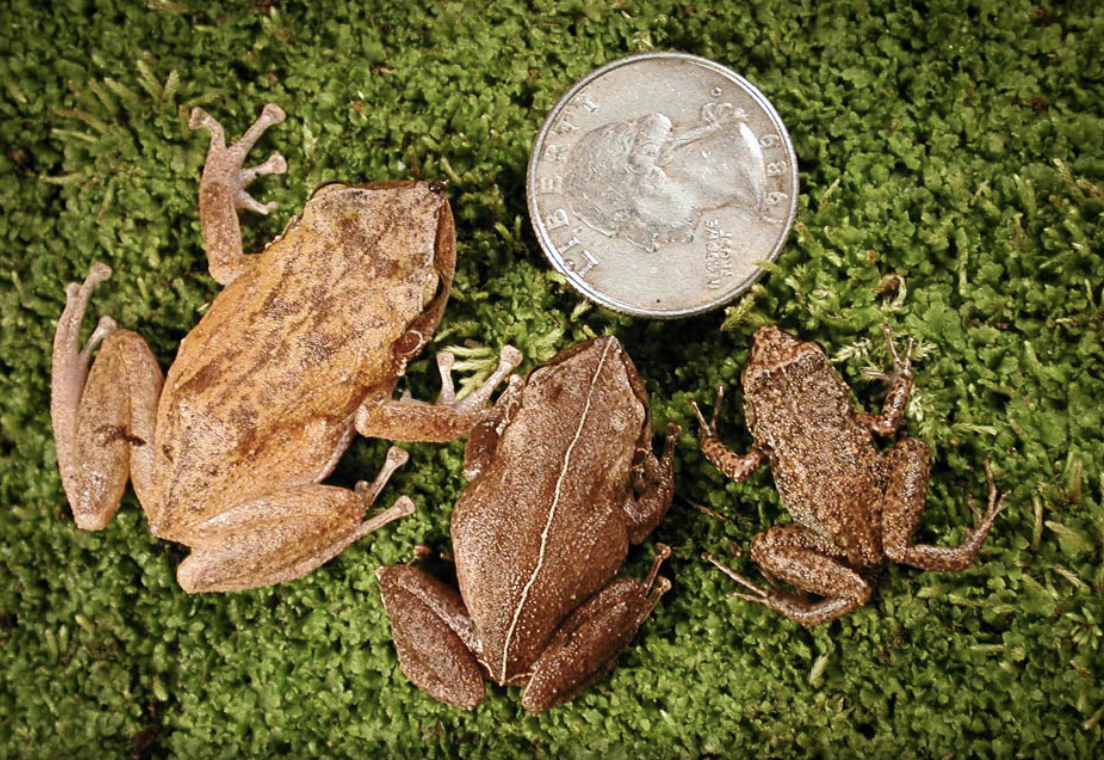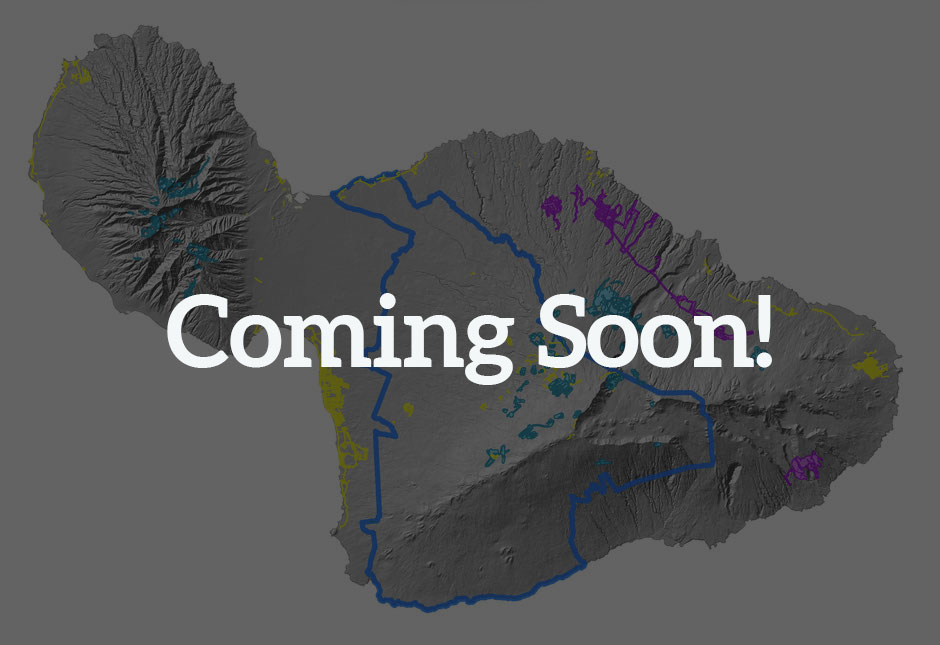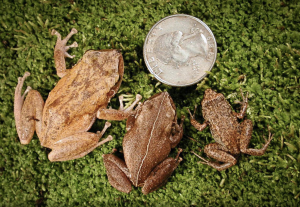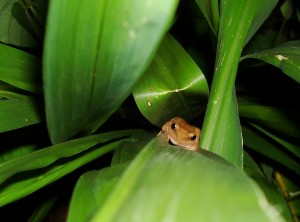
Coqui Frog
Eleutherodactylus coqui
Report if seen anywhere on Maui

Known from and potential habitat
Species Info General
Family: Anura
All frogs in the order Anura are Hawaii State Injurious Species. It is prohibited to release Injurious Species into the wild; transport them to islands or locations within the State where they are not already established; or export outside the State. for more information, see dlnr.hawaii.gov/wildlife/invasives/injurious-wildlife/.



Identification/Description
- Small, nocturnal (night-active) frog about the size of a quarter, up to two inches in length
- Usually brown or gray-brown, may have a lighter stripe down its back
- The male’s mating call is a two-note, high-pitched “co-qui” (pronounced ko-kee)
Hear a recording of a single frog progressing into multiple frogs - Native to Puerto Rico, accidentally introduced to Hawaii hidden in plants around or before 1988
Impacts
- No natural predators to keep populations in check (and no natural competitors)
- In areas in Hawaii where coquis consistently reach densities over 90,000 frogs ha−1, they are thought to consume 690,000 invertebrates ha−1 night−1 (Beard et al, 2008) and reduce invertebrate populations (Sin et al, 2008).
- Eat huge quantities of insects, removing insects from forest floor to treetops.
- Loss of insect services such as pollination
- Disrupt the balance of vulnerable native ecosystems
- Potential food source for snakes if they were to arrive
- The noise from their calls (80–90db at 0.5m), which is greater than levels set to minimize interference with the enjoyment of life (Beard and Pitt, 2005).
- Adverse economic impacts on tourism
- Decreased export plant sales
- Disclosure requirement for real estate transactions, has resulted in decreased property values in some locations
On Maui
As of August 2021, MISC has eliminated 22 populations of coqui frogs (five or more calling males) across Maui and there are currently 9 active sites. MISC has slowed the spread from Maliko gulch while keeping the rest of Maui from being affected; single “outlier” frogs have been caught all over the island.
How you can help
MISC is currently short-staffed. We’re rebuilding capacity and look forward to having a fully staffed and trained team soon. Even when our coqui crew is fully staffed, success depends on collective kuleana: communities working in their yards so MISC can focus on outliers and containment. We’re providing citric, loaning supplies, and guidance to support community efforts.
Control info/Info on what MISC does about it
- Coming Soon!
Resources/References
- Maui Invasive Species Committee’s Coqui Strategic Plan
- Certified Coqui-Free Program from MISC
- Eleutherodactylus coqui information from HEAR
- Eleutherodactylus coqui information from ISSG
Tips for Maui Residents
- Eliminate frog-friendly habitat
- Catch or spray your own coqui
- Citric mixing guidelines. This page has guidelines; be sure to follow all label directions.
- Build a CoquiBarrier
- Information on sprayers suitable for homeowner control of coqui frogs: Sprayer Info
- Report your coqui control efforts using Google Earth
Coqui Related Research:
- Eleutherodactylus coqui Thomas (Caribbean tree frog) – Choi and Beard, 2012
- Coqui frog invasions change invertebrate communities in Hawaii – Choi and Beard, 2012.
- Potential consequences of the coqui frog invasion – Beard and Pitt, 2005.
- Coqui Frog Research and Management in Hawaii – Radford and Sin, 2007
- Strong founder effects and low genetic diversity in introduced populations of Coqui frogs – Peacock, Beard, O’Neill, Kirchoff, and Peters, 2009
- Evolutionary Consequences of the Introduction of Eleutherodactylus – O’Neill, 2009
- Predicting the Distribution Potential of Coqui – Bisrat, White, Beard, and Cutler, 2012
- Genetic Basis of a Color Pattern Polymorphism in the Coqui Frog Eleutherodactylus coqui – O’Neill and Beard, 2010
- Aerially applied citric acid reduces the density of an invasive frog in Hawaii, USA – Tuttle, Beard, and Al-Chokhachy 2008
